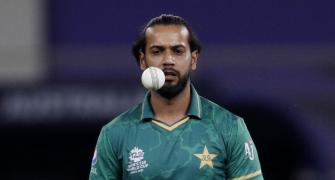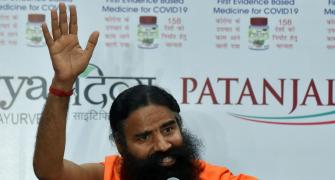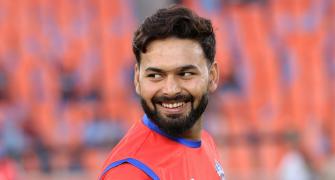The Department of Telecommunications (DoT) has identified between 51 and 60 MHz of spectrum, the radio frequencies that enable wireless communications, in several service areas that will allow it to offer between 10 and 12 licences to operators to introduce third-generation (3G) services.
This marks a significant increase from the 3G policy that DoT had finalised -- and is awaiting government clearance -- of auctioning only five licences per circle on the basis of an availability of 25MHz of spectrum. 3G services enable high-speed download of data like movies and music on the mobile.
The 3G auction will now be undertaken based on the fresh availability of spectrum in various circles.
Based on the higher spectrum availability, DoT will now be able to offer licences to 12 operators each in Andhra Pradesh, Tamil Nadu (including Chennai), Haryana, Karnataka, Orissa and Kerala; and 10 licences each in Kolkata and Madhya Pradesh (see table).
DoT, however, has limited spectrum in Delhi (21 MHz), Gujarat (23 MHz) and Himachal Pradesh (21 MHz), which is enough to permit only four operators.
The identification of so much extra spectrum is significant as there are few other countries that offer consumers so many 3G service providers to choose from.
Globally, the number of operators per country ranges from two to a maximum of five. The UK has five 3G players, Australia and Brazil four each and most European states have between two and three. Singapore has only two players and the Philippines three.
Overall, there are 228 operators in 94 countries that offer 3G services.
With the government already issuing 11 to 13 licences for 2G services (second generation, or the current level of services) in every circle Indian consumers might get to choose from 15 to 16 operators in each circle for their mobile services (2G and 3G), which is unparalleled anywhere in the world.
But many experts said this might put pressure on the viability of the business for new players.
"The valuation of our licence has virtually halved or become a third of what we had estimated in January. We were looking at $4 billion; currently investors are chary about paying even $1-2 billion. That is because the market, despite the growth, cannot accommodate so many players," said the chairman of a company that recently received an all-India licence.
He added that contrary to market perception, "the US, Europe and the Japan have shown no interest in India, only cash-rich West Asian companies like Bahrain Telecom or Qtel are looking".
India's mobile subscriber base is roughly 300 million and analysts expect it to hit 700 million by 2011. Assuming five to six incumbents will control half the additional market (or 200 million subscribers), the seven to 10 new operators (with 2G or 3G licences or both) will have to fight for the remaining 200 million subscribers.
Under the proposed 3G policy, the government has liberalised the eligibility criterion, which will no longer be limited to incumbents, as the telecom regulator had suggested.
The draft policy says any holder of a universal access service licence or with experience of running 3G services will be permitted. The move will allow new players like AT&T, among others, who have shown interest in investing in one of the world's fastest growing telecom markets.







